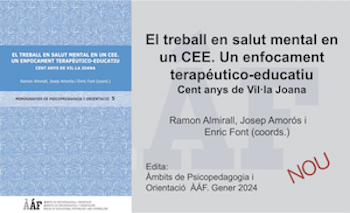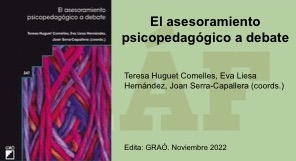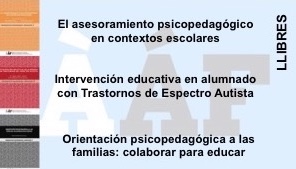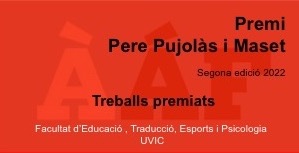Music beyond emotion and well-being
DOI:
https://doi.org/10.32093/ambits.vi60504971Keywords:
music, musical education, benefits, stages of lifeAbstract
This article exposes the educational function that, in recent years, music has played and that it can or should play in the future. Scientific advances are contrasted that confirm the benefits that musical practice provides at all stages of life as a procedure for the development of other skills in addition to artistic skill, an essential skill for the cognitive, emotional and social development of people.
References
Arús, E. (2024). Entrevista a Pep Alsina. Eufonía. Didáctica de la Música, 100, 88-90.
Barenboim, D. (2008). El sonido es vida. Barcelona: Belacqva documentos.
Bisquerra, R. (2017). Música y educación musical. Eufonía. Didáctica de la música,71 , 43-48.
Caracci, C., Martel, K., Le Normand, M.T. (2022). The positive learning transfer from a musical play early-learning system to young children’s linguistic and spatial skills. Music Education Research, 24 (4) , 494-511. https:/doi.org/10.1080/14613808.2022.2076820
Cason, N. y Schön, D. (2012). Rhythmic priming enhances the phonological processing of speech. Neuropsychologia, 50 (2), 2652-2658.
Chmiel, A., Kiernan, F., Ramallo, H.D. y & Davidson, J.W. (2024). Musical Activity as Avoidance-Based Emotion Regulation During the COVID-19 Pandemic: Evidence Across Continents. Empirical Studies of the Arts, 42 (2), 412-438.
Fortuna, S., y & Nijs, L. (2020). Children’s representational strategies based on verbal versus bodily interactions with music: an intervention-based study. Music Education Research, 22 , 107 – 127 .
Gillanders, C., Casal De La Fuente, L. (2020). Enhancing mathematical thinking in early childhood through music. Pedagogies, 15 (1), 60-79. https:/doi.org/10.1080/1554480X.2019.1673167.
Grandjean, D. y Labbé, C. (2017). The impact of Dalcroze Eurhythmics on the development of self-representations and social comperencies. En Del Bianco, S., Morggeneng, S. et Nicolet, H. (coord.) Pedagogie, art et science: l’apprentissage par et pour la musique selon la méthode Jaques-Dalcroze, 89-108. Droz.
Gruhn, W. (2005). Children need music. International Journal of Music Education, 23 (2), 99-101.
Habegger, L. (2010). Number concept and rhythmic response in early childhood. Music Education Research, 12 (3), 269 - 280.
Hallam, S. y Himonides, E. (2022). The power of music: an exploration of the evidence. Open Book Publishers.
Hidalgo, C. y Schön, D. (2019). Música y plasticidad cerebral: La música al rescate del lenguaje. Eufonía. Didáctica de la música, 79, 41-48.
Imberty, M. (2000). Text introductif: Vers une Psychologie des Systèmes Dynamiques en Musique. En Miroudot, L., Structurartion Mélodique et Tonalitéchez l’Enfant. Paris: L’Harmattan.
Jauset, J.A. (2017). ¿La música distrae? Editorial Círculo Rojo.
Juslin, P.N. (2005). From mimesis to catharsis: expression, perception, and induction of emotion in music. En Miel, D., MacDonald, R., y Hargreaves, D.J. (Eds.). Musical communication . Oxford University Press, 85-115.
Lacárcel, J (2003). Psicología de la música y emoción musical. Educatio, 20-21, 213- 226.
Lecaunet, J.P. (1996). Prenatal auditory experience .En Deliège, I., y Sloboda, J. (eds) Musical beginnings, origins and development of musical competence. Oxford University Press, 3-34.
Liu, H. (2024). Using artificial intelligence to analyze and classify music emotion. Journal of Computational Methods in Sciences and Engineering, 24 (4-5), 2611-2628.
Malbrán, S. (2002). Tapping in time: A Longitudinal Study at the ages three to five years. Bulletin of the Council for Research in Music Education, Special Issue, 153-154.
Malloch, S. y Trevarthen, C. (2009). Musicality: Communicating the vitality and interests of life. En S. Malloch , S y C. Trevarthen, C. (eds.), Communicative Musicality. Exploring the basis of human companionship. Oxford University Press, 1- 11.
Martenot, M. (1993). Principios fundamentales de formación musical y su aplicación. Madrid: Ediciones Rialp.
Moog, H. (1976). The musical experience of the Pre-scool child . Schott.
Oriola, S. y Gustems, J. (2015). Educación emocional y educación musical. Eufonía. Didáctica de la música, 64, 1000. https:/doi.org/ DOI: 10.1340/RG.2.1.5159.4948 .
Palacios, F. (2004). La brújula al oído. Vitoria. AgrupArte.
Papatzikis, E. (2014). Música en Artes y emociones que potencian la creatividad. Informe Fundación Botín 2014.
Papousek, H. (1996). Musicality in infancy research: biological and cultural origins of early musicality. En Deliège I. y Sloboda, J. (eds). Musical beginnings, origins and development of musical competence. Oxford University Press, 37-55.
Piernagorda, R. (2023). Música a l’escola. Per a què? Tesis doctoral. Universitat Ramón LLull.
Sabbatella, P.L. (2022). Música y salud en la infancia. Revista Eufonía. Didáctica de la Música, 93 , 42-48.
Schafer, R. M. (1975). El rinoceronte en el aula. Buenos Aires: Ricordi.
Storr, A. (2002). La música y la mente. Barcelona: Paidós.
Trombetti, A., Hars, M., Herrmann, F., Ferrari, S., Rizzoli, R., Kressig, R. (2017). Prévention des chutes par une méthode d’exercice en musique (Rythmique Jaques-Dalcroze). En Del Bianco, S., Morgenegg, S. et Nicolet, H. Pédagogie, art et science: l’apprentissage par et pour la musique selon la méthode Jaques-Dalcroze , 121-129.
Vigotsky, L.V. (2001). La imaginación y el arte en la infancia. Méjico: Ediciones Coyoacán.
Viñas, F.; Viladot, L. y Casals, A. (2022). Emerging critical events in creative processes involving music, dance and mathematics in the school. International Journal of Music Education,40 (2), 228-243.

Downloads
Published
Issue
Section
License
Copyright (c) 2024 AMBITSAAF; Eugènia Arús

This work is licensed under a Creative Commons Attribution-NonCommercial-NoDerivatives 4.0 International License.
The authors maintain their copyright and give the right to the first publication of the work to the journal, registered under a Creative Commons Attribution-Non Commercial-NoDerivs license. This license allows others to download the works and to share them with others as long as they credit the author, but it does not allow for any kind of modification or commercial use.














